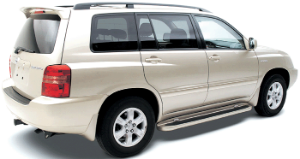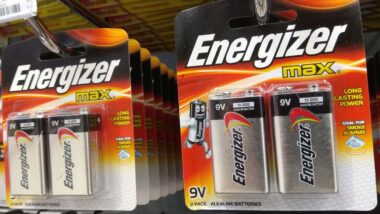Top Class Actions’s website and social media posts use affiliate links. If you make a purchase using such links, we may receive a commission, but it will not result in any additional charges to you. Please review our Affiliate Link Disclosure for more information.

The Toyota class action lawsuit alleges that the Toyota Highlander XU20, XU40, XU50, Highlander Hybrid MHU28, and other Toyota vehicles equipped with power lift gates all have problems with their design in that a “power arm” can break, leaving the back door in an open position. Confronted with consumer complaints about the problem, Toyota “systematically denied the existence of the Defect, and thus refused to honor any applicable warranties,” the Toyota class action lawsuit says. As a result, Toyota has “failed to reimburse vehicle owners for the costs they incur resulting from damages related tot he failures of the lift gate and/or refuse to provide repairs free of charge.” In some instances, repairing the allegedly defective Toyota lift gates can cost owners up to $5,000 in out-out-pocket costs.
Lead plaintiff Annita Emerson claims in the Toyota class action lawsuit that she purchased a 2009 Toyota Highlander model that came with a three-year, 36,000 mile warranty. In March of 2013 the apparatus failed and she sought to have it repaired by Toyota, which refused to do so.
Further, Emmerson “did not want to drive [the vehicle] until the power lift gate was fixed because the defect poses a severe safety concern in that the power rear door can get stuck in a way that can trap small children,” the Toyota Highlander class action lawsuit says.
When Toyota allegedly refused to perform the necessary repairs, Emerson alleges that she had to pay $4,700 out of pocket so that the vehicle was in operable condition again. Yet a service bulletin issued by Toyota to its dealerships and repair shops in 2012 noted that it should have been “covered under the Toyota Comprehensive Warranty,” which covered the woman’s vehicle at the time of the failure, the class action lawsuit says.
Instead, the company has “failed to issue any recall or provide compensation for those who had already repaired the [lift gate] defect or paid for damages resulting from the failure.” To rectify that, the class action lawsuit seeks an injunction requiring Toyota to issue a recall for any models like the Toyota Highlander and Toyota Venza that use the electric, power lift gate system as well as compensatory damages on violations of California state laws.
Emmerson is seeking to represent all current and former owners and lessees of the following Toyota vehicles in the United States: Toyota Highlander XU20, Toyota Highlander XU40, Highlander Hybrid MHU28, and Toyota Highlander XU50.
The plaintiff is represented by class action lawyers Robert Ahdoot and Tina Wolfson of Ahdoot Wolfson PC and John A. Yanchunis of Morgan & Morgan Complex Litigation group.
The Toyota Highlander Class Action Lawsuit is Annita Emerson, et al. v. Toyota Motor North America Inc., et al., Case No. 14-cv-02842, in the U.S. District Court for the Northern District of California.
UPDATE: The Toyota Highlander Lift Gate lawsuit was dismissed on December 19, 2014.
ATTORNEY ADVERTISING
Top Class Actions is a Proud Member of the American Bar Association
LEGAL INFORMATION IS NOT LEGAL ADVICE
Top Class Actions Legal Statement
©2008 – 2024 Top Class Actions® LLC
Various Trademarks held by their respective owners
This website is not intended for viewing or usage by European Union citizens.















One thought on Toyota Highlander Class Action Lawsuit Wants Rear Door Defect Fixed
“Driver error” is a catch-all excuse used by automakers to divert attention away from serious safety defects, it seems. There is insufficient regulation of safety standards in the automobile industry, especially in the area of complex electronics. For instance, Toyota is in the lead in terms of cases of sudden unintended acceleration. I’m not referring to the SUA events involving jammed floor mats, sticky accelerator pedals, or pedal misapplication. I’m referring to the unintended acceleration and erratic ELECTRONIC throttle control system behavior that occurs when a glitch is present in the substandard software. In a recent Oklahoma court case lost by Toyota, Bookout vs. Toyota, embedded software expert Michael Barr’s findings of ETCS-i glitches were presented. Also noted was that a SUA-inducing glitch could also render an ineffective fail-safe. Translation? Your runaway Toyota could prove to be unstoppable until something impacts it.
Toyota, GM, and Chrysler, among other automakers, have hidden safety-related information from the public for far too long. Drivers’ and their passengers’ lives are at stake. In the case of sudden unintended acceleration, pedestrians have been injured and killed as well. Crashes into storefronts, buildings, and homes, are daily occurrences now and there is an extremely well-orchestrated push to conclude “driver error.” Other speculative conclusions are “medical condition” (diabetes, seizures, etc.), prescription medications, driving under the influence of something, etc. A recent far-fetched speculation was that the driver’s shoe (a teen learning to drive with her father beside her) jammed the accelerator causing the vehicle to “take off!” Don’t most teenagers wear flip-flops? Show us how a flip-flop causes this.
In the case of GM’s ignition switch, “driver error” would be the easy way out. Does GM use this conclusion despite evidence to the contrary? Are driver’s (if they survive) statements discounted or discredited as they are in the cases of Toyota sudden unintended acceleration? Usually, the automakers follow the same playbook. Be sure to read Parris Boyd’s “BEWARE of Toyota…it’s next victim may be YOU” blog and Jessie Powell’s “Route 44 Sold me a LEMON” blog to see how it’s done.
One thing is clear. GM and Toyota aren’t going to tell you anything you don’t find out on your own. It seems historically and literally, the automakers like to be “unaware” of the issues customers reveal to them. They’d much rather say their loyal customers are confused and/or causing the problems themselves. That way, their dear bottom line is not impacted negatively. And now, with all the media control via advertising and more, the automakers’ secrets can remain hidden for a whole lot longer…decades+ as shown! Add NHTSA in their back pockets, good reputation management companies, on-line customer complaint suppression, and a gaggle of attorneys, and you have an untouchable entities, don’t you? Maybe…as long as the grassroots vehicle owner groups don’t wise up and organize, like GM Recall Survivors, to demand answers and expect more from lawmakers and the automakers.